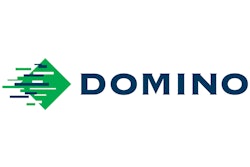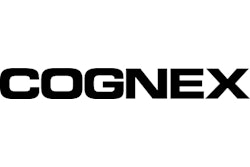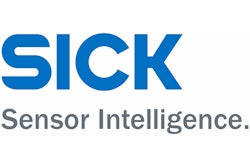The pharmaceutical industry’s need for coding and identification technology that can help protect tomorrow’s medicines from counterfeiters has never been greater. So pharmaceutical contract packager Tjoapack of Emmen, the Netherlands, has come up with a tablet line whose equipment and software establish a verifiable chain of custody that associates the blister cavity with the blister pack, the blister pack with the carton, the carton with the corrugated case, and the case with the stretch-wrapped pallet.
“We’ve always felt that, as a contract packager, we need to deliver added value,” says CEO Eric Tjoa in explaining the motivation behind the installation. “And besides, legislation requiring traceability is clearly on the way.”
The integrated solution that Tjoapack came up with was added to an existing blister-pack line. By adding five camera systems, a laser printer, and two thermal-transfer label printers—along with the all-important software that ties it all together—Tjoa turned the line into what he believes is the first one capable of tracking and tracing all the way down to the tablet or capsule. This solution, notes Tjoa, complies not only with current global standards including ISO, GAMP4, and 21 CFR Part 11, but also with industry standards such as FDA or EFPIA as well as organization mandates such as Wal-Mart or U.S. Dept. of Defense.
A key partner in assembling the line was Control Pharma, part of the Domino Group (www.domino-printing.com). Tjoapack and Domino now operate the line as a Centre of Excellence in Tjoapack’s facility. Key global customers are being shown the line since about June of this year.
“We believe no one before this has been able to demonstrate the ability to use track and trace codes all the way down to the level of the individual dose,” says Tony Walsh, business development manager in Domino’s Integrated Solutions Group. “Also a challenge is getting this to work at line speeds. We’re at 120 cartons per minute right now, which is quite good even if it isn’t what you would consider extremely high. We continue to work on upping our speeds.”
Unique codes on units
The business of unique coding begins at the form/fill/seal machine, which was supplied by Romaco (www.romaco.com). Mounted on it is an ink-jet, drop-on-demand, piezo printer from TEC (www.toshibatecusa.com). It puts a unique 2D bar code on the foil lidding material of the blister packs, one code per pill. The codes are generated and managed by Domino’s software.
Blister packs exit the form/fill/seal machine and are conveyed beneath the first of five vision systems, all supplied by Cognex (www.cognex.com). This first vision system reads all 10 codes on a blister pack and validates that it can read all 10. It also sends data to the Domino software system so that all 10 unique codes are associated in a child/parent fashion with a single blister pack.
Just a few feet downstream from this first vision system is a second one. It reads one of the 10 codes on each blister pack and sends that data to the Domino software system so that the sequence of blister packs can be established. This sequencing information makes it possible to verify during downstream cartoning which blister packs go into which cartons.
Blister packs make a right angle turn at this point and enter a Romaco cartoner. It collates blister packs two-high in its flighted conveyor and pushes these pairs into folding cartons. Just before the insertion of two blister packs into a carton, a third Cognex vision system reads any single code on the top blister pack and sends that data to the software system. If the blister pack is recognized and if it’s in the right sequence, the software generates a unique 2D code and signals a Domino laser coder to print a unique 2D code on the carton flap. The software also establishes a child/parent relationship between the unique carton code and the 20 unique tablet codes inside the carton.
As glued cartons exit the Romaco cartoner, they make another right angle turn and pass beneath Cognex vision system number 4. It confirms that the expiration date is on the carton—this date is also printed by the Domino laser printer—and that the contents of the carton are known.
Change in status
Once a carton gets past vision system number 4, the status of that carton in the software program changes. The software records in the data base that that carton is a valid carton. If a carton is removed before Camera 4 and is then reinserted into the production flow, when that carton reaches the downstream bundling station, camera number 5 would detect that fact and would generate a signal telling the operator which carton is not valid. The operator can then make sure the invalid carton is removed from the queue of cartons leading into the bundling station.
The final vision system in the line is checking all 10 carton codes in a bundle. If all 10 are valid—i.e., if they’re readable and they’ve gone past vision system 4—the operator puts the bundle in a case.
Cases are erected by hand and given a thermal-transfer label generated by a Zebra (www.zebra.com) printer. The Domino software assigns label designs to production orders and generates unique case codes as well. So when the operator logs onto the work station to begin a production run, he enters at a touch screen the order number and batch number he’s producing. This causes the Zebra printer to print the correct label and to also print on that label the unique code that has a child/parent relationship with the carton codes in the case.
On the day of Packaging World’s visit to the Tjoapack plant, the codes being printed on case labels were linear bar codes. But 2D codes or RFID tags can also be implemented. It’s just a matter of defining the label format in the software. If RFID tags are in use, the printer will verify that it was able to write to the tag. If it can’t, it will print VOID on the label so that the operator knows a new label must be printed.
Once all bundles are in the case and the case label has been applied, the operator uses a bar-code reader to scan the case label. This signals the Domino software program that it’s okay to print the next unique code on the next case label.
Virtual pallet
As case labels are scanned and cases are manually palletized, the software builds a virtual pallet. This makes it possible to verify that the pallet is still intact and unchanged when its cases are later scanned at the down-stream stretch wrapper. Each unique case number is associated in the system with a unique pallet ID number. When a pallet is complete, the operator inputs that information and the software begins associating subsequent case codes with a new pallet ID number.
Finished pallets are taken next to a remote stretch wrapping station. There an operator scans all case codes—or an RFID reader from Sick (www.sick.com) reads all case tags—to ensure that the pallet has the same cases it had when it left the end of the packaging line. Assuming the cases are all valid, stretch wrap is applied around the pallet. A Zebra thermal-transfer printer then produces a label with a unique pallet code associated to all the case codes on the pallet. The operator applies this label to the stretch wrapped pallet. With that, a child/parent relationship is established between the pallet label and the case labels.
Domino’s Bob Lilley, services director in the Integrated Solutions group, says it’s important to point out that no data held on the line controller can be lost.
“The software is based upon a client/server model,” says Lilley. “If there’s a PC crash, everything is still stored on the server.”
According to Tjoa, the response by drug manufacturers who have seen the Tjoapack track-and-trace line has been enthusiastic. He’s prevented, however, from identifying who those drug makers are.
Tjoa also says there were lessons to be learned as the line went from idea to design to implementation. One small example is the way in which the vision systems had to adjust to the amount of light reflected off of the stainless steel.
But such hurdles were overcome quickly enough. Tjoa is pleased to now have available such a unique track-and-trace capability.
“I’ve always believed packaging should be more than just a container,” he says.





























